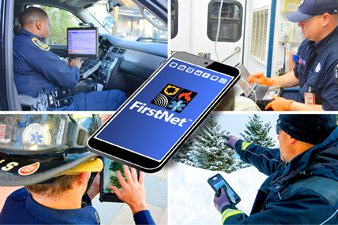Something awful occurs. Lives are at stake. The scene is confusing. Several law enforcement units eventually get there. They have trouble communicating across organizations. The radio frequency gets swamped.
9/11? Hurricane Katrina? The Grenada invasion?
It happened in all those instance. And now you can add the Broward County, Florida high school shooting.
This we know: Not much went right in last month’s response, at least not initially. A deputy stayed outside in crucial early minutes. The officers ordered everyone to keep 500 feet back. Confusion occurred over where the shooting was even taking place. And dated radio communications capabilities added to the chaos.
If you want to know how difficult things were, listen to this 18 minute recording, posted by the Miami Herald. As more facts come out, it’s also clear that the law enforcement radio network became overloaded. County and town police had trouble communicating.
Sadly, we’re heard this before.
The federal government was supposed to solve the problem of radio lack of interoperability and bandwidth. The effort has dragged on for decades. In some ways, the federal government should be the standards broker. How else could thousands of jurisdictions agree on anything? A uniform national network results in a national market. That in turn increases competition and lowers the cost of equipment.
By cosmic coincidence, just last week FirstNet, an “independent authority” within the Commerce Department, says it gave AT&T a “green light” to actually start installing the long-awaited broadband network. It will use its own dedicated band. Build out and deployment will take years. But at least it looks like the 17-year deliberations are starting to result in something tangible.
“Not quite sure what’s going on,” was a radio statement by an officer during last year’s music festival shooting in Las Vegas. Overall, the initial spoken traffic is far more deliberate and calm than that of Broward County. Things get shriller once the source, intensity and lethality of the shooting emerge. Some voices become nearly frantic at the number of casualties. But both incidents show how voice communications, while crucial, give only a sketchy, almost pointillist picture of what’s going on.
“We need to smoke the shooter before we have any more victims!” someone yells. Others report running out of blankets and ambulances. One officer sees the bullets coming from the “50th or 60th” floor of the Mandalay Bay. Another says there’s an active shooter “inside the fairgrounds.”
The new broadband network promises simultaneous transmission of video and other data, such as building or street layouts, detail location data, that can help improve response. FirstNet operates a testbed for new digital capabilities.
Everyone is talking about how to make schools safer. In general public safety, many digital technologies like shot-spotter systems and dynamic control of traffic lights show promise. Given how spotty and unreliable LTE and cellular service is even in urban areas, an exclusive and capable first responder radio network is long, long overdue.
Copyright
© 2024 Federal News Network. All rights reserved. This website is not intended for users located within the European Economic Area.

